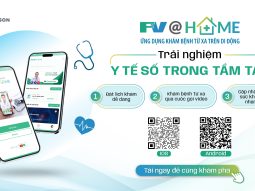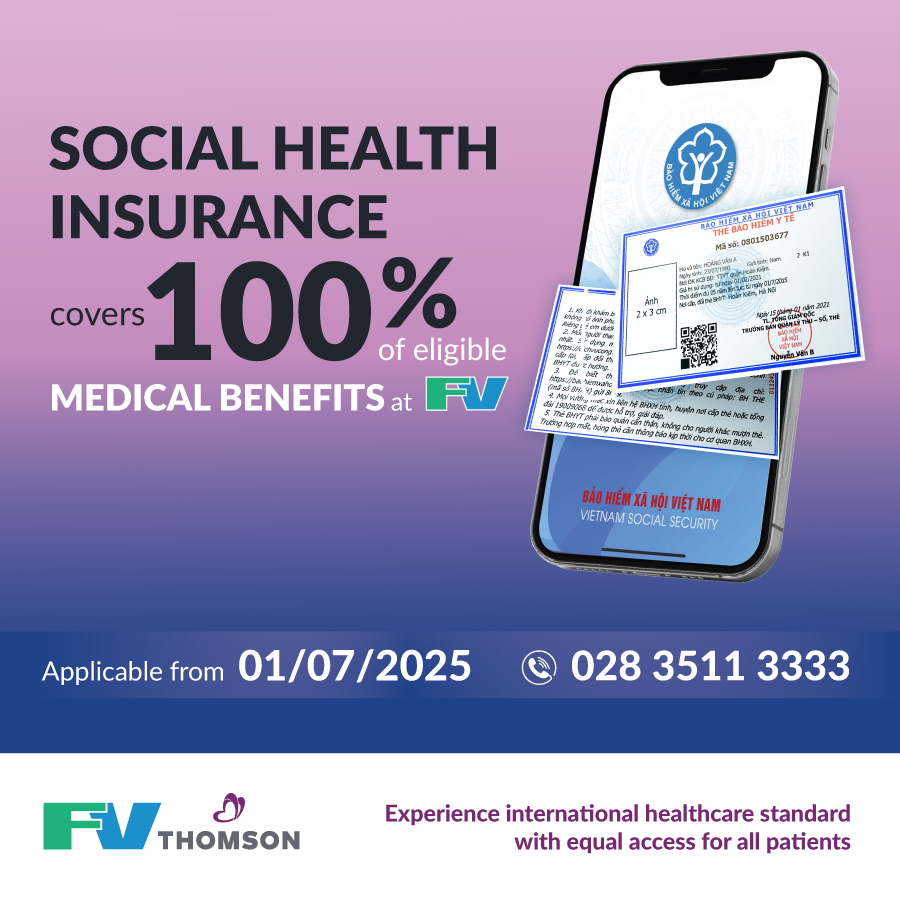“It’s a success, team!” The exclamation rang out in FV Hospital’s Cathlab as Ho Minh Tuan, MD, PhD, and the cardiology team watched the stent expand fully, clearing the blockage and restoring normal blood flow and a heartbeat to the patient.
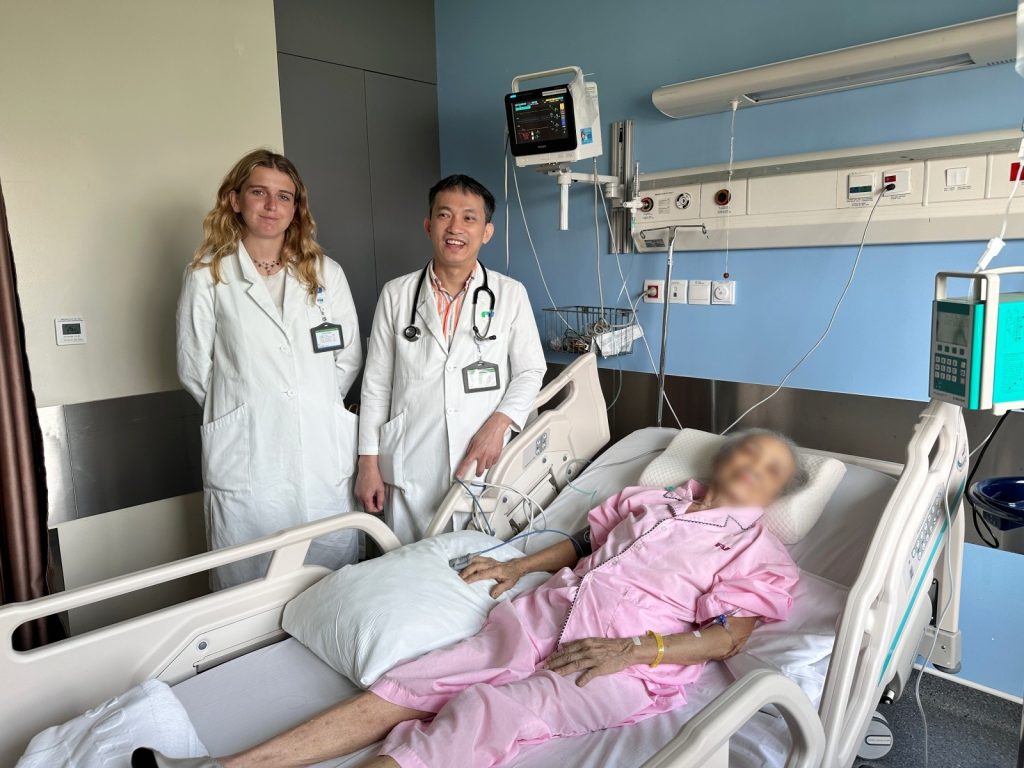
This procedure is one of the first two minimally invasive interventions in Vietnam using Intravascular Lithotripsy (IVL) technology, marking a significant breakthrough in interventional cardiology. The technique enables patients with severe coronary artery calcification, who previously required open-heart surgery, to be treated effectively through a minimally invasive approach.
Rotapro Diamond Drill Combined With IVL Ultrasound Shockwaves to Break Down Hard Calcium Plaques
Mrs H.T.C., 89 years old from Dong Nai, was admitted to FV Hospital in an emergency with shortness of breath and chest pain. Imaging revealed an acute myocardial infarction caused by a blocked right coronary artery, and severe narrowing, up to 90%, of the left main coronary artery due to heavy calcification. “This artery supplies up to 70% of the blood to the heart, so the risk of sudden cardiac death was extremely high,” explained Ho Minh Tuan, MD, PhD, Head of Cardiology and Interventional Cardiology at FV Hospital.
The thick, extensive calcium deposits tightly adhered to the arterial wall made conventional balloon angioplasty with stent placement impossible. In the Cathlab, Dr Ho Minh Tuan calmly applied a “dual strategy”: first, the Rotapro diamond drill was carefully used to grind away the rock-hard superficial calcium. Once the vessel lumen was exposed, IVL was deployed with powerful ultrasound shockwaves to fracture the deep-seated calcium beneath the endothelium. The IVL balloon was then inflated to further dilate the artery, enabling the stent placement and restoring blood flow.
The entire procedure was guided by intravascular Optical Coherence Tomography (OCT). Before the intervention, the patient underwent comprehensive assessments of cardiac, liver, and kidney function, as well as assessments for underlying conditions such as diabetes and hypertension. Every step was meticulously calculated to minimise risk and ensure maximum safety.
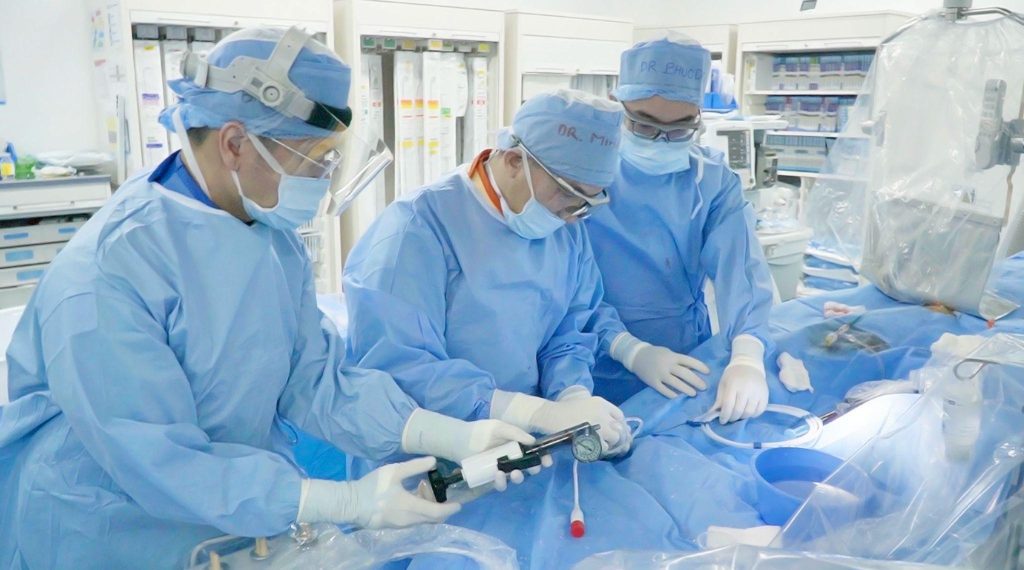
After the procedure, Mrs C.’s condition stabilised, and the chest pain and shortness of breath that had tormented her completely disappeared. Expressing her gratitude to Dr Ho Minh Tuan, she shared: “Meeting such a skilled doctor makes me feel relieved and at ease.”
“I was so afraid of open-heart surgery! Luckily, I had Dr Tuan!”
That same day, the team led by Dr Ho Minh Tuan, achieved another milestone by successfully treating Mrs T.T.T.D., 69 years old, from Bac Lieu, using IVL technology. This was an exceptionally complex coronary stenosis case. The patient suffered from multiple comorbidities, including diabetes, hypertension, hyperlipidaemia, and chronic kidney disease, all contributing to severe arterial calcification.
Mrs D. frequently experienced angina attacks and even occasional fainting. She had previously undergone stent placement at another hospital in Ho Chi Minh City, but due to excessive calcification, the stent could not fully expand, leading to restenosis twice. On two occasions, she was admitted to FV Hospital for emergency care, where Dr Tuan used the Rotapro diamond drill to enlarge the artery. However, the improvement was limited until the introduction of IVL, which marked a turning point in her treatment.
With this IVL intervention, the calcified plaques were completely fractured, allowing the stent to expand fully inside the artery. “Many studies have shown that when a stent expands optimally inside the artery and is combined with prescribed medication, the risk of restenosis falls to below 0.5%,” explained Dr Tuan.
Just two days after the procedure, Mrs D. was able to breathe with ease again. “I’ve been following Dr Tuan for heart treatment for over 10 years. Recently, I fainted and was taken to the provincial hospital. Once stable, I was transferred to FV for further treatment. When I heard the doctor introduce this new IVL technology, I was so overjoyed. I was terrified of open-heart surgery. Without Dr Tuan, I might not be alive today!” she said emotionally.

IVL technology: The Key to Survival in Complex Coronary Artery Stenosis
Statistics show that out of every 100 interventional cardiology cases, approximately 5 fail due to severe calcification. These cases require specialised techniques such as Rotapro or IVL. If the artery cannot be sufficiently opened for balloon angioplasty and stent placement, restenosis is almost inevitable, putting patients at high risk of acute myocardial infarction.
In the past, the only option was open-heart surgery, which carries substantial risks, particularly for elderly patients or those with multiple comorbidities. Many patients had to accept the likelihood of restenosis after intervention, resulting in prolonged and costly treatment.
IVL technology has been a game-changer. It not only breaks down calcification effectively but also does so through a minimally invasive procedure. Patients remain conscious throughout the intervention, recover quickly, and experience significantly fewer complications compared with traditional open-heart surgery.
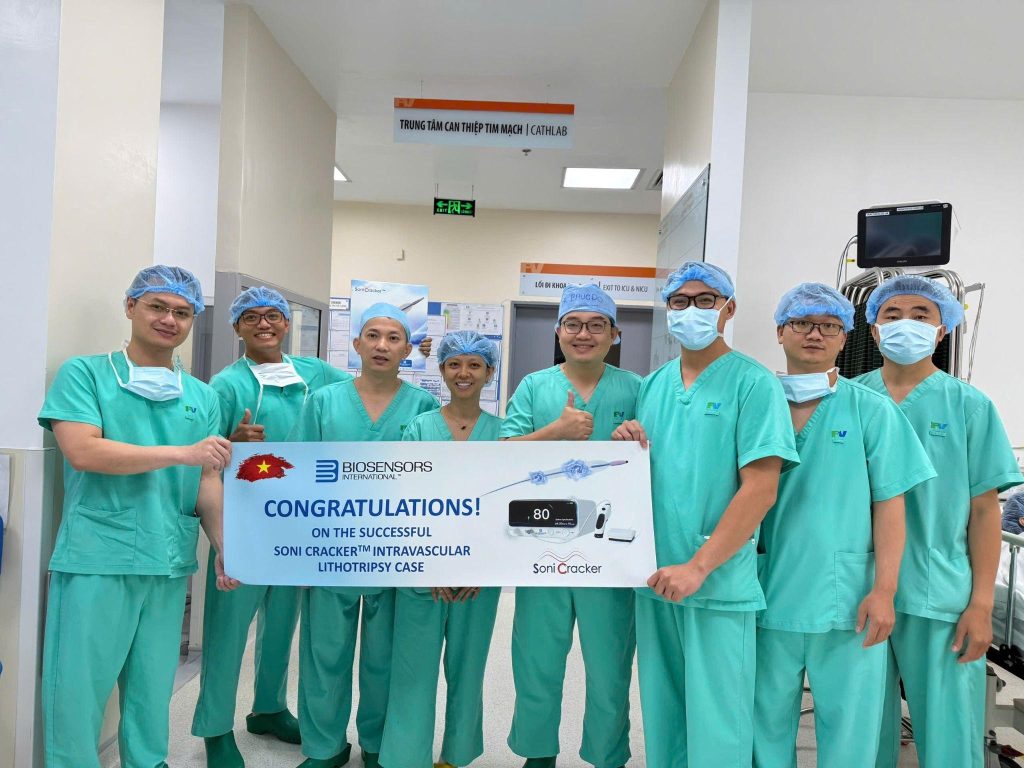
The Cardiology and Interventional Cardiology Department at FV Hospital is among the pioneers in Vietnam in applying minimally invasive techniques to effectively treat complex cardiovascular diseases, including myocardial infarction, arrhythmia, valvular insufficiency, and heart failure, and severe coronary artery stenosis.
Notably, advanced procedures performed in the Cathlab at FV Hospital are covered by Health Insurance.
For more information, please contact the Cardiology and Interventional Cardiology Department at FV Hospital at (028) 35 11 33 33 or visit us at 06 Nguyen Luong Bang, Tan My Ward, Ho Chi Minh City.

 Vi
Vi 
